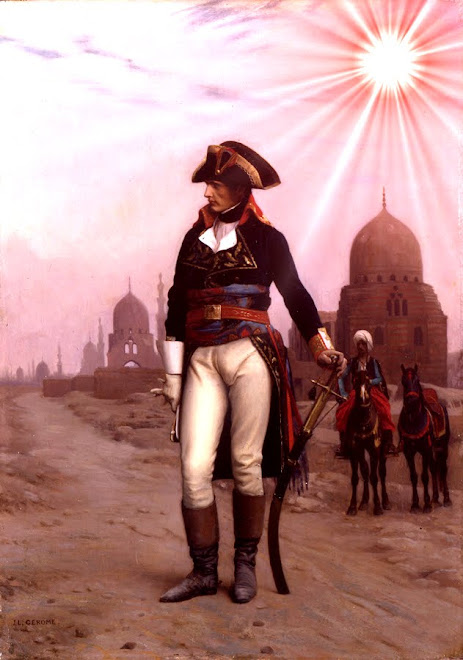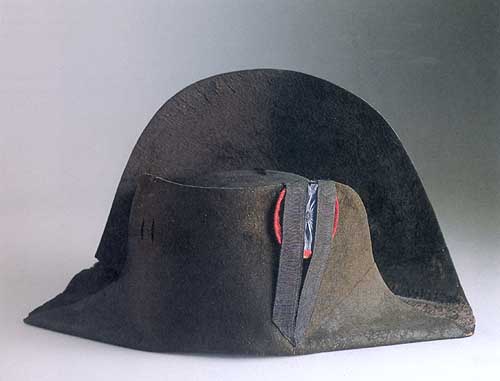The Battle of Waterloo began late on the morning of June 18th 1815. The ground had been saturated by torrential rains that followed the eruption of the volcano Tambora in April of that year. The decade 1810-1820 was the coldest of the C19th due to an unprecedented amount of volcanic eruptions in quick succession and there was probably a lot of residual dust in the atmosphere even before Tambora exploded with far greater force than the Krakatoan eruption of 1883.
The Prussian Army was seen to the east in the early afternoon and Napoleon had to send all his reserves to fend them off while he tackled Wellington to his front. The Young Guard enacted prodigies of valour at Placenoit and 7,000 Prussians became casualties before overwhelming their French counterparts. Meanwhile Grouchy, far away with 33,000 vital supporting troops did not heed advice and march to the sound of the guns - an old military maxim. Napoleon had failed to warn him in time. At the Battle of Ligny on the 16th, Napoleon's last victory, the Prussians had retreated in disorder but they were not routed. The expected help on their right from Wellington had not materialized and Gneisenau was all for heading off back to Prussia tout de suite. There was no sign of Blucher who had been ridden down by French cavalry and was lain trapped beneath his horse. Had the French soldiers captured or killed Blucher there would have been no Waterloo as Wellington would never had stood without the promised aid of a Prussian corps.
Although the remnants of the Young Guard were still fighting at Placenoit late in the evening of the 18th, it was all over in the centre around 8pm after a second Prussian corps had arrived and when elements of the 'Middle' regiments of the French Imperial Guard were repulsed by the British soldiers who had been given time to regroup by the arrival of their allies. There was no massacre of the Old Guard - the two elite regiments of chasseurs and fusiliers escaped in good order as David Chandler makes clear in his impressive account of Napoleon's campaigns.
In the painting above we see Napoleon at the climactic moment of the battle when he realizes that all is lost. Such was the panic amongst the retreating French soldiers that the Emperor had to abandon his coach - it was captured by the Prussian cavalry who set off in pursuit. The stolid British troops were too exhausted to pursue and most of their cavalry had been destroyed earlier in the battle in repulsing the initial attack of d'Erlon's corps. Too excited to reign in their mounts they plunged headlong into the French lines and many were caught by Pire's lancers who had been observing the approaching Prussians.
C. John Tarttelin M.A. History
Author of The Real Napoleon - The Untold Story
A Souladream Production




No comments:
Post a Comment